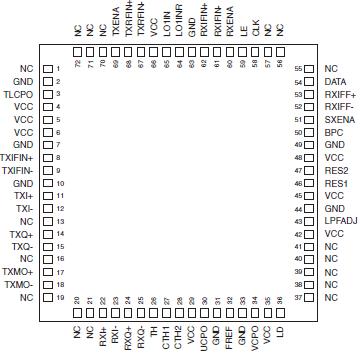CX74016: Features: • Quadrature demodulator for downconversion• 80 dB IF gain range and 30 dB baseband gain range• Integrated receive baseband filters with tunable bandwidth• Integrat...
floor Price/Ceiling Price
- Part Number:
- CX74016
- Supply Ability:
- 5000
Price Break
- Qty
- 1~5000
- Unit Price
- Negotiable
- Processing time
- 15 Days
SeekIC Buyer Protection PLUS - newly updated for 2013!
- Escrow Protection.
- Guaranteed refunds.
- Secure payments.
- Learn more >>
Month Sales
268 Transactions
Payment Methods
All payment methods are secure and covered by SeekIC Buyer Protection PLUS.

 CX74016 Data Sheet
CX74016 Data Sheet







